Related Research Articles

Where Do We Come From? What Are We? Where Are We Going? is a painting by French artist Paul Gauguin. The painting was created in Tahiti, and is in the Museum of Fine Arts in Boston, Massachusetts. Viewed as a masterpiece by Gauguin, the painting is considered "a philosophical work comparable to the themes of the Gospels".
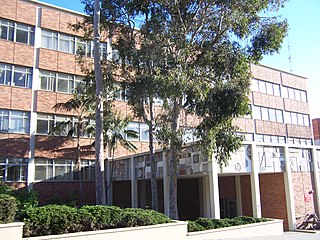
The UCLA College of Letters and Science is the arts and sciences college of the University of California, Los Angeles (UCLA). It encompasses the Life and Physical Sciences, Humanities, Social Sciences, Honors Program and other programs for both undergraduate and graduate students. It is often called UCLA College or the College, which is not ambiguous because the College is the only educational unit at UCLA to be currently denominated as a "college." All other educational units at UCLA are currently labeled as schools or institutes.
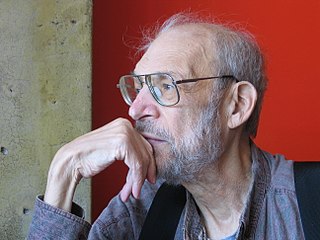
Albert Boime, was an American art historian and author of more than 20 art history books and numerous academic articles. He was a professor of art history at the University of California, Los Angeles for three decades, until his death.
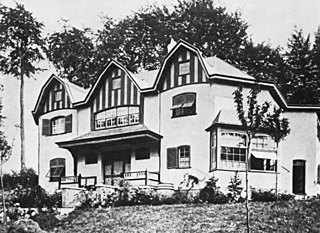
Bloemenwerf is the name of the residence house of Belgian painter, architect and interior designer Henry van de Velde, built in 1895. It is located in Uccle, Brussels, Belgium. Velde designed the house and its interior as well as the furnishings. It was inspired in part by William Morris' Red House.

The Langlois Bridge at Arles is the subject of four oil paintings, one watercolor and four drawings by Vincent van Gogh. The works, made in 1888 when Van Gogh lived in Arles, in southern France, represent a melding of formal and creative aspects. Van Gogh used a perspective frame that he built and used in The Hague to create precise lines and angles when portraying perspective.
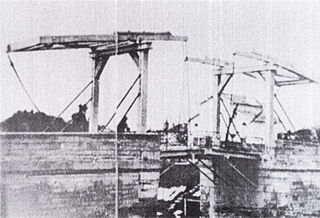
Langlois Bridge was a double-beam drawbridge in Arles, France, which was the subject of several paintings by Vincent van Gogh in 1888. Being one of eleven drawbridges built by a Dutch engineer along the channel from Arles to Port-de-Bouc, this bridge might have reminded the artist of his homeland.

Japonaiserie was the term used by Dutch post-impressionist painter Vincent van Gogh to express the influence of Japanese art on his works.

Still Life: Vase with Pink Roses was painted in 1890 by Vincent van Gogh in Saint-Rémy. At the time the work was painted Van Gogh was readying himself to leave the Saint-Rémy asylum for the quiet town of Auvers-sur-Oise outside of Paris. This and the similarly-dated Pink Roses reflect the optimism Van Gogh felt at that time about his future, both in his choice of flowers as a subject and the colors used. The painting is owned by the National Gallery of Art of Washington, D.C.

Farmhouse in Provence, also known as Entrance Gate to a Farm with Haystacks, is an oil-on-canvas painting produced in 1888 by Dutch painter Vincent van Gogh in Arles, Provence, at the height of his career. Partially due to having been inspired by painter Adolphe Monticelli, Van Gogh sought the Provence region of France to further expand his painting skill and experience. Van Gogh used several pairs of complementary colors in the Farmhouse in Provence, the color contrast bringing an intensity to his work. The painting is owned by the National Gallery of Art in Washington, D.C.

Vincent van Gogh painted at least 15 paintings of olive trees, mostly in Saint-Rémy-de-Provence in 1889. At his own request, he lived at an asylum there from May 1889 through May 1890 painting the gardens of the asylum and, when he had permission to venture outside its walls, nearby olive trees, cypresses and wheat fields.

Portrait of Artist's Mother is an 1888 painting by Vincent van Gogh of his mother, Anna Carbentus van Gogh, drawn from a black-and-white photograph. Van Gogh's introduction to art was through his mother, herself an amateur artist. After years of strained relations with family members, Van Gogh excitedly shared some of his works he thought his mother would appreciate most, of flowers and natural settings. In this painting, Van Gogh captures his mother's dignified and proud nature. It was painted at almost the same time, and with a very similar palette of colours and pose as his Self Portrait

Van Gogh's family in his art refers to works that Vincent van Gogh made for or about Van Gogh family members. In 1881, Vincent drew a portrait of his grandfather, also named Vincent van Gogh, and his sister Wil. While living in Nuenen, Vincent memorialized his father in Still Life with Bible following his death in 1885. There he also made many paintings and drawings in 1884 and 1885 of his parent's vicarage, its garden and the church. At the height of his career in Arles he made Portrait of the Artist's Mother, Memory of the Garden at Etten of his mother and sister and Novel Reader, which is thought to be of his sister, Wil.

Road with Cypress and Star, also known as Country Road in Provence by Night, is an 1890 oil-on-canvas painting by Dutch post-Impressionist painter Vincent van Gogh. It is the last painting he made in Saint-Rémy-de-Provence, France. The painting is part of the large van Gogh collection of the Kröller-Müller Museum, located in the Hoge Veluwe National Park at Otterlo in the Netherlands.
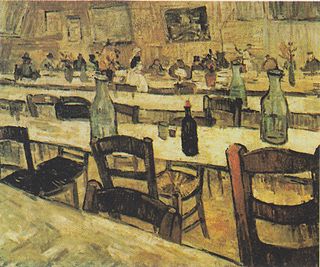
Interior of a Restaurant in Arles is a colored oil painting by Dutch artist Vincent van Gogh on an industrially primed canvas of size 25 (Toile de 25 figure) in Arles, France, late August, 1888.

Boats du Rhône is a series of two sketches and three oil paintings, listed below, created by the Dutch artist Vincent van Gogh while living in Arles, France, during August, 1888.

Gabriel P. Weisberg is an American art historian.

Self-Portrait with Halo and Snake, also known as Self-Portrait, is an 1889 oil on wood painting by French artist Paul Gauguin, which represents his late Brittany period in the fishing village of Le Pouldu in northwestern France. No longer comfortable with Pont-Aven, Gauguin moved on to Le Pouldu with his friend and student Meijer de Haan and a small group of artists. He stayed for several months in the autumn of 1889 and the summer of 1890, where the group spent their time decorating the interior of Marie Henry's inn with every major type of art work. Gauguin painted his Self-Portrait in the dining room with its companion piece, Portrait of Jacob Meyer de Haan (1889).
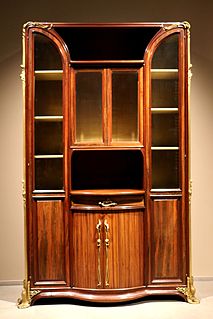
The Fin-de-Siècle Museum is a museum in Brussels, Belgium, dedicated to the full spectrum of the arts of the period between 1884, when the Société Libre des Beaux-Arts was founded Brussels, and 1914, the year of the outbreak of World War I. It is one of the constituent museums of the Royal Museums of Fine Arts of Belgium. The museum opened on 6 December 2013.

Between 1900 and 1913, Hector Guimard was responsible for the first generation of entrances to the underground stations of the Paris Métro. His Art Nouveau designs in cast iron and glass dating mostly to 1900, and the associated lettering that he also designed, created what became known as the Métro style and popularized Art Nouveau. However, arbiters of style were scandalized and the public was also less enamored of his more elaborate entrances. In 1904 his design for the Opéra station at Place de l'Opéra was rejected and his association with the Métro ended; many of his station entrances have been demolished, including all three of the pavilion type. Those that remain are now all protected historical monuments, one has been reconstituted, and some originals and replicas also survive outside France.

Rain is an oil-on-canvas painting by Vincent van Gogh, created in 1889, while he was a voluntary patient at an asylum in Saint-Rémy-de-Provence. He repeatedly painted the view through the window of his room, depicting the colours and shades of the fields and hills around Saint-Rémy as they appeared at various times of day and in varying weather conditions. Rain measures 73.3 cm × 92.4 cm and is held by the Philadelphia Museum of Art in the United States.
References
- ↑ Debora Silverman. UCLA. Retrieved 7 December 2016.
- ↑ Debora L. Silverman. John Simon Guggenheim Memorial Foundation. Retrieved 10 August 2017.
- ↑ Van Gogh and Gauguin: The Search for Sacred Art. CAA Reviews, 16 August 2002. Retrieved 10 August 2017.
- ↑ Debora Silverman receives 2015-16 fellowship from New York Public Library. Meg Sullivan, UCLA, 1 May 2015. Retrieved 7 December 2016.